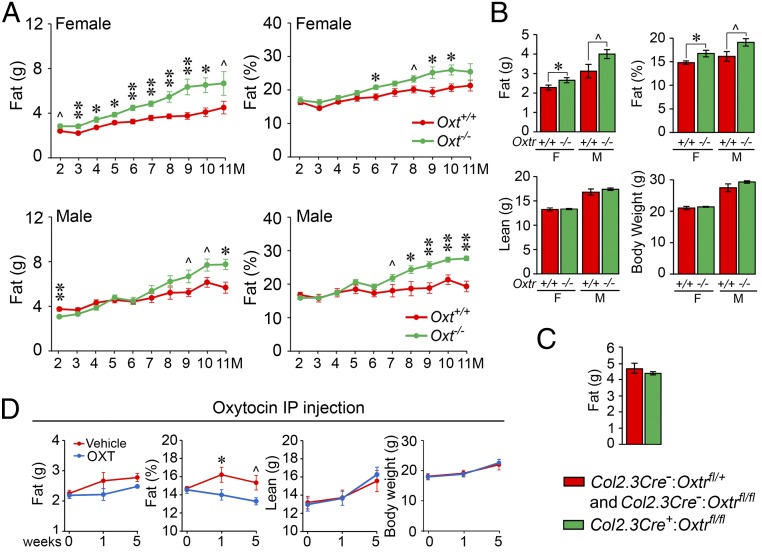Fig. 3.
Oxytocin signaling directly affects body fat. Incremental enhancements in body fat (% of total body weight) in male and/or female mice deficient in OXT (Oxt−/− mice) (A) or the OXT receptor (Oxtr−/− mice) (B) compared with their respective wild-type littermates (Oxt+/+ or Oxtr+/+ mice) measured by the GE Lunar Piximus (n = 4 to 7 mice per group). (C) No such difference was noted in mice lacking OXTRs specifically in osteoblasts, namely in Col2.3Cre+:Oxtrfl/fl vs. control Col2.3Cre−:Oxtrfl/fl and Col2.3Cre−:Oxtrfl/+ mice. This latter finding suggests that signals from the osteoblast did not modulate the proadiposity effects of OXTR deletion (n = 4 to 5 mice per group). (D) Effect of i.p. OXT injection on fat mass (g and %), lean mass (g), and total body weight (g) over 5 wk of treatment (n = 6 to 7 mice per group). Data are expressed as mean ± SEM; comparisons with control mice, *P < 0.05, **P < 0.01, or showing a trend ^0.05 < P < 0.1, 2-tailed Student’s t test.

